As the tourism market continues to develop, tourist behavior is also undergoing significant changes. The perception of the tourism market varies greatly. For example, some people closely follow the new direction of changes in tourism demand and believe that the current tourism statistics are too conservative. On the contrary, some people stick to traditional business under the trend of individual tourists and non-attraction tourism, and the dividends of tourism development are very limited. They believe that the current tourism statistics are "watered down" and there are cognitive biases in the current tourism statistics caliber and statistical methods. It is very necessary to compare the tourism statistics system in Europe, the birthplace of tourism statistics, and compare and understand the international origins of my country's tourism statistics. 1. Tourism definition and statistical implementation The term "touring" first appeared in England in 1811. For more than 200 years, all walks of life have never stopped discussing the definition of tourism. For the convenience of statistics, the commonality of the tourism technical definitions of the United Kingdom, France, Italy and the European Union is greater than the individuality, and there is no obvious difference from the relevant definitions of my country except for spatial distance.
1. UK: Broad definition of tourists UK tourism statistics are jointly completed by the UK Office for National Statistics (ONS) and VisitBritain. The ONS mainly collects statistics on tourism through the International Visitor Survey (IPS), while VisitBritain collects the annual Great Britain Tourism Survey (GBTS), Great Britain Day Trip Survey (GBDVS) and other special tourism surveys.
The definition of domestic tourism by the British National Tourism Board is divided into domestic overnight tourism and domestic day trips. Domestic overnight tourism is defined as travel for any purpose (leisure, business, visiting relatives and friends, etc.) in Great Britain. The definition of domestic day trip first gives a time constraint of 3 hours + leisure day trip, that is, travel for leisure purposes from leaving personal residence to returning for more than 3 hours. Secondly, the definition of domestic tourism day trip is a subset of 3 hours + leisure day trip, which must meet the following two criteria at the same time: the activities involved are not held regularly; the destination is a town or village where daily life and work activities are not located (this criterion does not apply to watching sports events, visiting attractions and participating in public festivals). The UK does not stipulate the spatial distance of tourism to avoid classification problems of tourism behavior caused by spatial scope and tourism motivation. The definition of overseas tourists by the UK National Statistics Office in the International Passenger Survey refers to tourists who permanently reside in countries or regions outside the UK and visit the UK for less than 12 months, including British citizens who have lived abroad for 12 months or more and return to the UK for vacation. The number of outbound tourism visits refers to outbound tourism by people with permanent residence in the UK.
From the above, we can see that the UK’s statistical coverage of domestic tourism, inbound tourism and outbound tourism is larger than that of China.
2. France: Tourists have high requirements for spatial distance
There are three main sources of tourism statistics in France: the National Institute of Statistics and Economic Studies (Insee), the Directorate General of Enterprise (DGE) and the Bank of France. The statistics of the National Institute of Statistics and Economic Studies on the tourism industry mainly include statistical surveys of the French accommodation industry, employment surveys, and tourism consumption surveys based on the National Accounts (SNA). The purpose of the statistical survey of the accommodation industry is to understand the passenger flow and customer source structure information of the accommodation industry in France and in various regions. The scope of the survey includes hotels, camping and other accommodation formats. The Directorate General of Enterprise is one of the agencies under the Ministry of Economy and Finance of France. Its Competitiveness, Entrepreneurship and Enterprise Development Department publishes relevant data on tourism consumption and tourism economic contribution through the Tourism Satellite Account, and conducts a national tourism demand sampling survey (SDT) and a foreign visitor survey (EVE). The Bank of France calculates France's international tourism income and tourism consumption through the balance of payments.
Insee's definition of tourism adopts the standards of the United Nations World Tourism Organization (UNWTO), that is, a person travels or stays for a short period of no more than one year in a non-habitual environment for leisure, business and other purposes, and does not receive remuneration in the place of stay. The DGE defines tourists as travelers who leave their habitual environment and enter a tourism environment for personal purposes (leisure, visiting relatives and friends, medical treatment, etc.), business purposes (work tasks, training, exhibitions, etc.) or mixed personal and business purposes, including day-trip tourists and overnight tourists. Activities between residence and work or study are not classified as tourism. The definition of habitual environment by the United Nations UNWTO includes the following three standards: duration of stay, distance between the destination and residence, and frequency of travel to the destination. Due to factors such as population density and administrative unit size, France uses the following definition in tourism statistics based on the above standards: overnight tourists are travelers who leave their habitual residence for at least one night, and day-trip tourists are travelers who travel back and forth on the same day and are more than 100 kilometers away from their residence. Travelers who travel back and forth across the border on the same day are counted as tourists regardless of the length of their travel distance, except that they cross the border for daily work or study.
(III) Italy: Following the UNWTO statistical standards Italian tourism statistics are jointly completed by the Italian Institute of Statistics and the Bank of Italy. The Italian Institute of Statistics integrates statistics on domestic tourism into its many statistical surveys, among which the household budget survey includes a travel and tourism survey and a survey on the occupancy of tourist accommodation; the population census includes data on the number of travelers and the number of overnight stays by Italian residents. The Bank of Italy is responsible for border tourism surveys. For the definition of tourism, Italy follows the standards of the European Statistical Office and the UNWTO. Due to the significant impact of the cruise industry on Italy's tourism industry, its definition of inbound day-trip tourists also specifically lists cruise tourists. (IV) The European Union: Both common requirements and respect for differences The European Statistical Office cooperates with the statistical offices of each member country within the European statistical system to coordinate various statistical work in Europe. The European Statistical Office defines tourism as, in a statistical sense, tourism refers to travel by tourists outside their usual environment, for less than one year for any leisure or business as the main purpose, and not engaged in employed activities in the tourist destination. The statistics of the European Statistical Office clearly require a distinction between overnight tourists and day-trip tourists. The definition of habitual environment is limited by the high sensitivity of different countries to visitor flow and related indicators to the definition of habitual environment, and the fact that the definition is greatly influenced by the subjective feelings of individual tourists. Although the European Statistical Office has tried to define it many times, all have come to nothing. After consultation, it is recommended that member states define it in accordance with the following description: the habitual environment is the geographical area where a person conducts his or her daily life, but it is not necessarily a continuous place. In addition, tourists should also meet the following criteria: the motivation for travel is not necessary for daily life, crossing administrative boundaries, the stay time for a day trip is not less than 3 hours, and the stay time for an overnight trip is not less than 24 hours. 2. Tourism statistical indicators and statistical methods (I) United Kingdom: Relying on large-scale sampling surveys
The UK's quantitative observations on the tourism industry are mainly divided into three categories: domestic tourism, international tourism, and tourism economic contribution. The current respondents for domestic tourism are citizens of England, Scotland, and Wales who take a day trip or overnight tour throughout the United Kingdom (UK). The annual Great Britain Tourism Survey includes important indicators such as the number of tourists, number of overnight stays, tourism expenditure, length of stay, travel motivation, mode of transportation, type of accommodation, and type of tourist destination. KantarTNS is responsible for data collection and analysis for the statistical survey. Computer-assisted face-to-face interviews (CAPI) are conducted on approximately 2,000 respondents aged 16 and above every week, asking respondents whether they have traveled in the past four weeks. Through continuous surveys, 100,000 samples are obtained each year, and seasonal changes in domestic tourism in the UK can be obtained while obtaining relevant data.
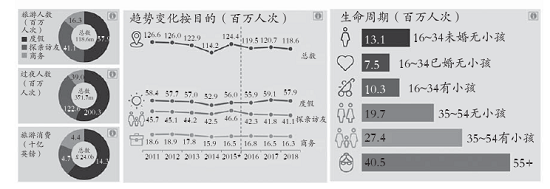
Figure 1 Statistics of overnight trips to Great Britain
Source: VisitBritain, KANTNSTS. Great Britain Visitors Report 2018
The Great Britain One-Day Tour Survey uses indicators such as the number of one-day tourers, tourism expenditure, destination type, travel motivation, mode of transportation, source of tourists, and tourist characteristics. The reporting scope is the same as the Great Britain Tourism Survey, and the respondents do not include Northern Irish citizens. The interview content is about leisure one-day tour itineraries in the past week. The survey is completed online, and since 2016, the sample collection volume of the one-day tour survey has increased from 673 to about 1,000, with about 35,000 valid samples per year.
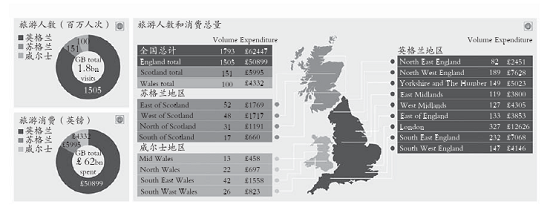
Figure 2 Statistics of one-day trips to Great Britain in 2017
Source: VisitBritain, KANTNSTNS. Great Britain Day Visitors Report 2017. https://www.visitbritain.org.
The International Travel Survey (IPS) led by ONS mainly includes indicators such as the number of people entering and leaving the country, tourism expenditure, accommodation facility capacity, occupancy rate, tourist characteristics, transportation methods, source of tourists, and travel motivations. Among them, monthly and annual data on capacity (number of accommodation places, bedrooms, and beds) and occupancy rate (overnight time, number of arrivals, occupancy rate) are collected from companies (such as hotels or camping sites). Resident travel data is collected through household surveys. The survey sample size is about 7,000 per quarter. The survey is conducted at ports of entry and exit, ships leaving or returning to the UK, and the European Tunnel.
The UK's tourism economic contribution rate is calculated by the country's National Statistics Office based on the UNWTO framework by establishing a tourism satellite account.
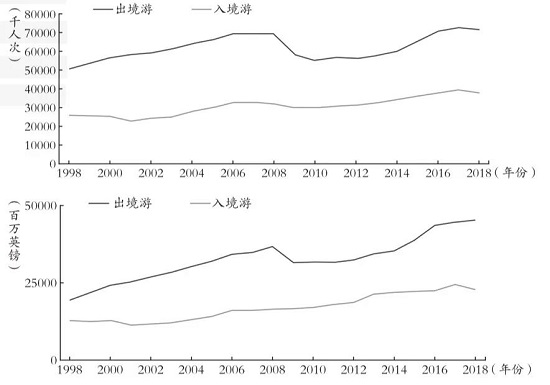
Figure 3 Comparison of the number of inbound and outbound tourists and their spending in the UK
Source: UK Office for National Statistics. 2018 Tourism Trends Report. http://www.ons.gov.uk. 2. France: More concerned about accommodation facilities reception and overnight stay statistics
The production of France's tourism statistics comes from three aspects. The most important data indicator - the summary of tourism statistics over the years is compiled and released by DGE based on data from multiple sources. The content includes the world tourism overview of the year, the contribution index of the tourism industry to the French economy, the accommodation industry overview, accommodation industry passenger flow, national tourism, inbound tourism, and an overview of tourist attractions.
The index of tourism's contribution to the French economy is generated based on the indicators of the French Tourism Satellite Account. The indicator framework is consistent with the Tourism Satellite Account recommended by UNWTO, mainly including eight indicators: the proportion of domestic tourism consumption in GDP, domestic tourism consumption, inbound tourism consumption, total added value of the tourism industry, the gross production value and added value of accommodation, employment, the total number of newly established tourism enterprises and closed tourism enterprises, and the total amount of city taxes. The data source is the consumption sampling survey of DGE. The national accounts of lnsee include total value added, accommodation sampling survey, economic industry sampling survey and employment sampling survey.
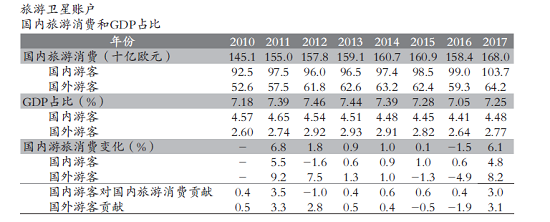
Figure 4 Statistics on tourism consumption in France
Note: Excerpt from the report, including indicators such as the total amount of tourism consumption by domestic and foreign tourists, their proportion and increase.
Source: French Enterprise Directorate-General. Domestic tourism consumption and GDP contribution table. 2018 Tourism Annual Handbook. https://www.entreprises.gouv.fr
The overview of the accommodation industry includes the number and capacity (number of beds) of commercial and non-commercial accommodation. The data is reported from the supply perspective by industry unions and star-rated tourism accommodation organizations, and compiled by Insee and DGE.
Accommodation industry passenger flow includes three non-monetary indicators: the number of tourist arrivals, the number of overnight stays, and the average length of stay in hotels, camping and other formats. Its data source is mainly based on Insee's sampling survey of accommodation industry passenger flow, which is divided into three parts. The hotel industry selects 12,000 hotels (covering 70% of the total number of hotels in France) for sampling surveys every month; the camping passenger flow survey selects 6,100 camping sites (covering 80%) for sampling surveys from April to September each year; other accommodation formats are sampled every month.
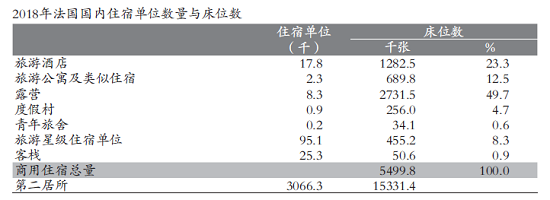
Figure 5 French accommodation industry statistics
Note: Excerpt from the report, including indicators such as the number of accommodation facilities, number of beds and proportion of hotels, camping sites and resorts.
Source: Directorate-General for Enterprise France. Table of quantity and capacity of various types of accommodation. 2018 Tourism Annual Manual. https://www.entreprises.gouv.fro
National tourism consists of non-monetary indicators such as the number of tourists, number of overnight stays, length of stay, travel motivation, number of trips per capita, and proportion of each type of tourism. Through the National Tourism Demand Sampling Survey (SDT), 22,000 people aged 15 and above are randomly selected as samples for surveys every month.
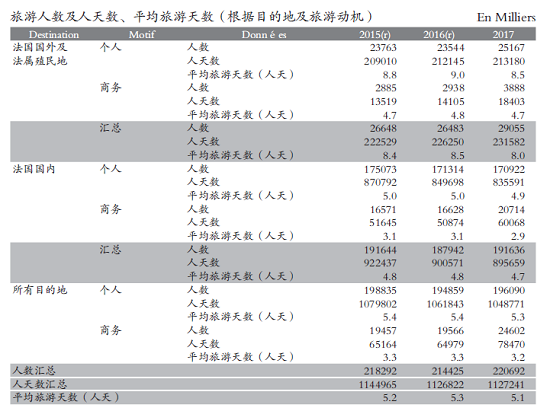
Figure 6 French national tourism statistics
Note: The indicators included are the travel motivation, total number of overnight stays and average length of stay for domestic and outbound tourism.
Source: Directorate-General for Enterprise France. 2018 Tourism Annual Handbook. https://www.entreprises.gouv.fro
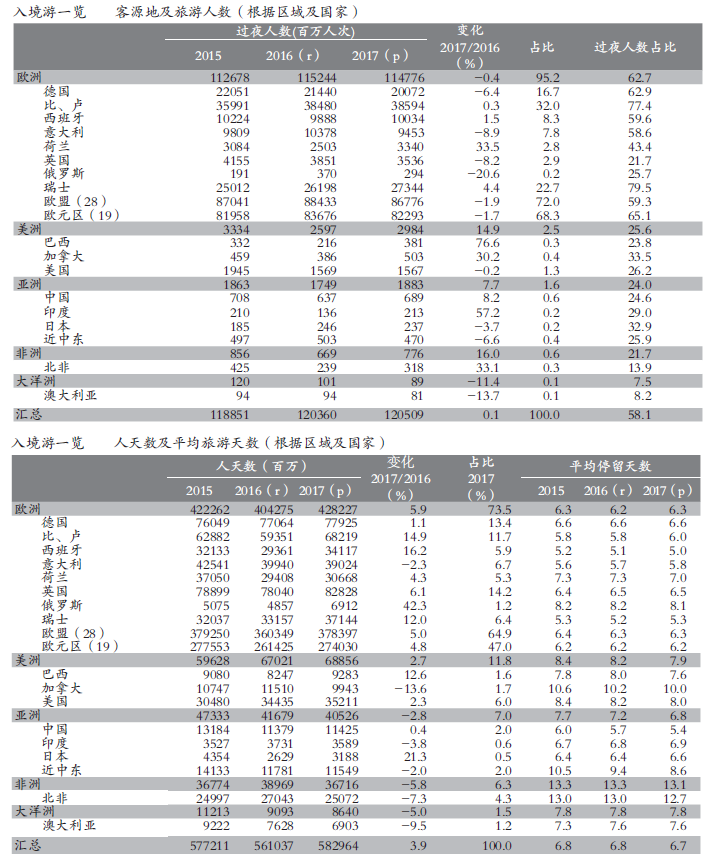
Figure 7 Statistics of inbound tourism to France
Note: The indicators included are the proportion of inbound tourist source areas, the number of day-trip tourists, the number of overnight tourists, the number of increases and the average length of stay.
Source: DGE. 2018 Tourism Annual Handbook https://www.entreprises.gouv.E. Inbound tourism includes non-monetary indicators such as the number of inbound day tourists and overnight tourists, source of tourists, number of overnight stays, length of stay, and travel motivation. Inbound tourism data comes from the Foreign Visitors Survey (EVE) jointly completed by DGE and the Bank of France. The sampling survey is conducted when tourists leave France, and 60,000 samples are drawn every quarter.
(III) Italy: Combining household surveys with random intercept interviews The travel and tourism part of the household budget survey in Italian tourism statistics is an important survey to understand the characteristics of Italian resident tourists, tourism expenditures and the number of tourists. The border tourism survey conducted by the Bank of Italy is an interview and statistics of residents and non-resident tourists at the Italian border (road and railway crossings, international ports and airports). The main purpose of this survey is to understand the consumption of tourism products and services by non-Italian citizens in Italy and their modes of transportation.
The main indicators of domestic tourism statistics are tourist characteristics, number of tourists, expenditure, travel motivation, etc. 4,875 household visits are conducted each quarter, and 19,500 samples are drawn throughout the year. Stratified sampling is carried out according to the regional and municipal population size.
The main indicators of international tourism statistics are inbound tourism revenue, number of day tourists, number of overnight tourists, source of tourists, length of stay, tourism motivation, accommodation method, transportation method, tourism type, satisfaction, etc.; outbound tourism expenditure, length of stay, destination, tourism motivation, accommodation method, tourism type, etc.
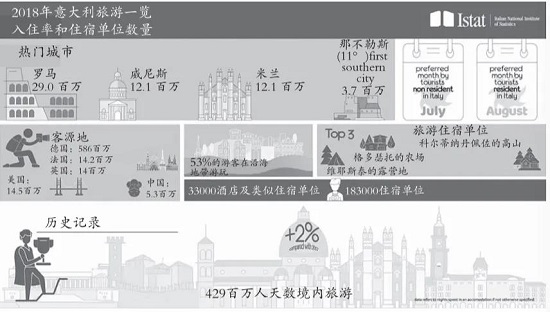
Figure 8: Tourism statistics in Italy 2018
Source: Italian Institute of Statistics. Domestic Tourism 2018. http://www.istat.it

Figure 9 International Tourism in Italy
Source: Bank of Italy. International Tourism Report 2017. https://www.bancaditalia.it.
The survey method is sampling survey and border statistics. The annual sampling sample size is 120,000. Nearly 70 border points are selected from the most representative border points in order to cover most of the international passengers crossing the Italian border, and then the overall characteristics are calculated based on the sampling weighting. The calculation of tourism economic contribution is carried out by the Bank of Italy through the Tourism Satellite Account. (IV) EU: Demand-side statistics are the main, and supply-side statistics are the auxiliary. The statistics of the European Statistical Office on the tourism industry mainly include the following two aspects: one is the supply-side indicator statistics, including the number, capacity, hotel occupancy rate, number of beds, etc. of tourist facilities. This part of the data is required to be collected by each country through enterprise reporting; the second is the demand-side indicator statistics, including destinations, tourist stay time, transportation methods, tourism consumption, tourist characteristics, etc., which are required to be collected by each country through household surveys. About 500,000 day trip or overnight tour samples are collected each year. The EU created a unified tourism statistics framework in 2011, and the data is surveyed and transmitted by EU member states. 3. Lessons from European tourism statistics (I) Technical definitions of statistics should take into account national conditions and travel conditions. Most European countries refine tourism definitions in terms of time and space based on the UNWTO recommended standards and their national conditions. For example, the UK has a 3-hour + one-day leisure tour, and France uses 100 kilometers to distinguish the concept of habitual environment for one-day tours. my country's tourism statistics are also based on the identification of habitual environments, and the time and space constraints are slightly different from those of European countries. There is not much difference between the technical definitions of tourism in my country and European countries, and each definition is in line with its own economic development level and the feasibility of statistical practice. Therefore, based on the definition recommendations of UNWTO, the definition of tourism is refined based on the national conditions of the country, which is the appropriate tourism definition. (II) Statistical indicators are mainly constructed around tourism demand, and the statistical focus is slightly different. The tourism indicator settings of various European countries reflect that each country has different emphases on monitoring the development of the tourism market. For example, France attaches importance to the accommodation industry and has a certain bias towards the indicators of the accommodation industry, while the UK focuses on the indicators related to the labor force and tourist attractions in the special survey. my country's tourism statistics are also dominated by the demand side, with the tourism market size and consumption as the statistical focus. Quality indicators such as overnight stay rate and average domestic tourism days per capita are receiving more and more attention. (III) The accounting of tourism value added should be normalized. Since indicators such as total tourism revenue and number of tourists are not highly comparable with other industries in the national economy, European countries generally attach importance to the use of tourism satellite account methods to normalize the calculation of tourism value added, total tourism consumption, tourism employment and other indicators. Although my country's calculation method is similar, due to the lack of special funding support, data such as virtual expenses for second homes, government collective tourism expenses, and residents' tourism reception expenses can only be estimated through data from individual provinces and cities, and the accuracy and scientificity need to be improved. Author: Hu Ningting